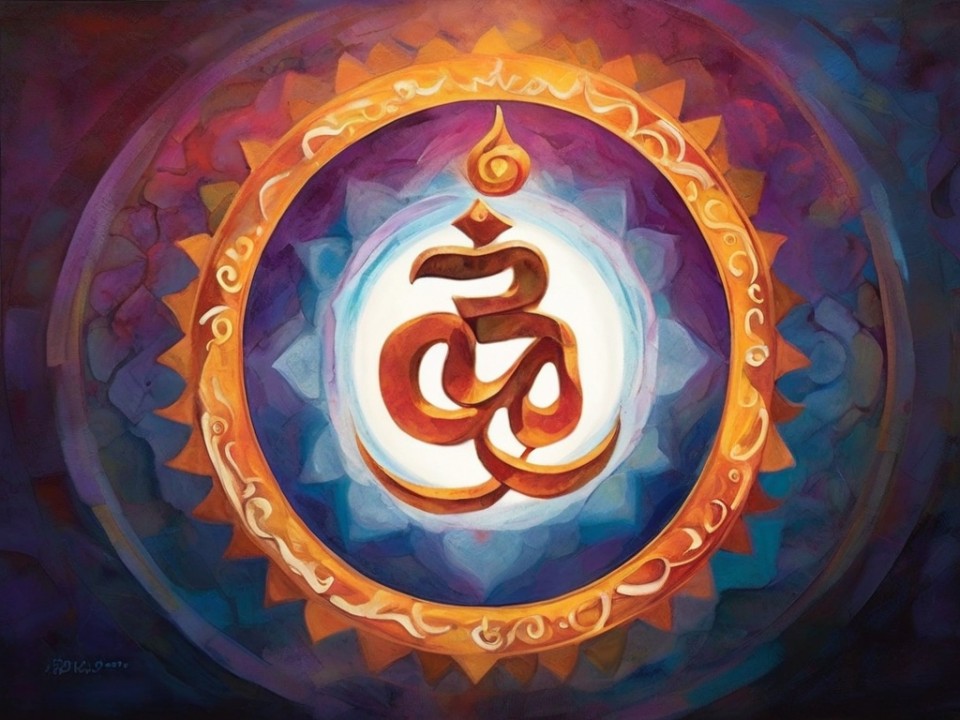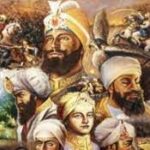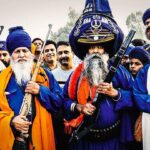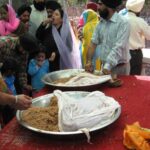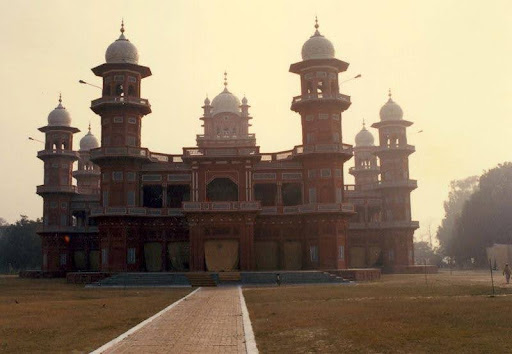Omkar & Onkar have both the similar meaning , only the pronunciations are differ ,Omkar in Hindi ( Origin from the Sanskrit ) similarly Onkar in Gurmukhi/Punjabi ( Origin from Sanskrit ) This controversy is indeed fool-hardy developed by young radicals of both Sikhs and Hindus.
Sri Guru Granth Sahib uses numerous names for the Almighty – perhaps more than 100. Om is just one of them. Waheguru signifies the Almighty. I assume Om signifies the same, but Sikhs do NOT chant Om at all. I have not found a single Sikh chanting Om in my life. Om is chanted only by the Hindus. They also have numerous other names for Almighty such as Eeshwer, Bhagwan, Parmeshar, etc.
Since the Sikhs NEVER start to chant Om, stop chanting it making it no sense. So the second part of your question is totally inaccurate and invalid.
• They are both Dharmik religions originating in India.
• Hinduism and Sikhism share the fundamental concepts of Atman, Dharma, Karma, Maya, Sansara (the cycle of rebirth and death), and Mukti/Moksha (Enlightenment that ended the cycle).
• Sikhism and Hinduism are both huge ways based on reverence of one’s Guru and learning spirituality from them.
• Hinduism and Sikhism both use devotion to God or Bhakti as a major spiritual pathway, and with a lot of shared practices like devotional poems and songs.
• Hinduism and Sikhism share numerous other core spiritual practices, like selfless service of others and Seva and meditation.
• Sikhism and Hinduism both worship in temples (though not the similar temples, for the most chunk).
• Hinduism and Sikhism both revere the holy Omkar sound.
• Sikhism and Hinduism both practice cremation of corpses.
• Sikhism and Hinduism both encourage vegetarianism and are highly valued.
• Hindus and Sikhs celebrate a few of the similar festivals together, like Holi and Diwali.
• During the Mughal era, Hindus and Sikhs were both forcibly and persecuted to convert to Islam, and both of them fight fiercely against this, protect each other and stand in admirable solidarity. I as a Hindu am very thankful to Sikhs for coming to the defense. Many of them were murdered and tortured for this. Indeed the status of Sikhs as defenders of Hindus was strong that historically numerous Hindus raising their eldest son as a Sikh, view Sikhism mainly as an army for the Hinduism defense from Islam.
Sikhism and Hinduism are both polytheistic and monotheistic.
The Mool Mantar is the Sikhism statement of faith. It is the basis of the whole of Sikhism and carries the key beliefs about Waheguru. It is taught to all young Sikh kids.
The Mool Mantar is the most significant composition in Sikhism, which is reflected in the fact that it is the open text of the Guru Granth Sahib. Sikhs believe that the Guru Granth Sahib is the word of Waheguru so it is never making mistakes.
The first line of the Mool Mantar is Ik Onkar, which signifies There is only one Almighty. This symbolises the importance of the belief in the oneness of humanity and the oneness of God (the belief that each one is equal).
The symbol “Ik Onkar” is seen in gurdwara and Sikhism homes. Its widespread utilization highlights the fact that this is the most important faith in Sikhism and that it should always be in the Sikhs head. The symbol supports Sikhs to aim on Waheguru when meditating and praying.
Ek Onkar, the most central of Sikhism and profound symbol, embodies the basis of the belief in a single all powerful Lord. Derived from the Punjabi language,Ek signifies one, and Onkar means the divine presence or supreme reality. This sacred symbol, the limits of some Sikh beliefs, highlight the interrelation of all creation and the unity of God.
Origin & Meaning
The origin of Ek Onkar could be traced back to the founder of Sikhism, Guru Nanak Dev, who introduced this symbol as a symbol of expressing the basic monotheism concept. Ek Onkar signifies belief in one eternal Almighty who is both formal (Sakar)and formless (Nirankar). The symbol visually represents the concept of Almighty as a single, unchanged reality from which everything originates.
Ek Onkar is a visually plain but deeply meaningful symbol. It consists of 2 parts:
Ek (ੴ): The number “1” representing the concept of oneness in Sikh culture. This signifies that there is only one Almighty, the sustainer of all life and the Creator of the universe. This concept rejected the idea of a plurality of Almighty and emphasized monotheism.
Onkar (ੴ): The word Onkar is a variant of the Sanskrit word Om, which has enormous significance in some Indian religions, include Hinduism. In Sikhism, “Onkar” symbolizes the vibration of God’s creation or divine sound. It signifies continuous creation of the universe by one Creator.
Ik Onkar ” is more than just a symbol as it is the key of Sikh spirituality. It embodies a fundamental belief in the oneness of all beings and in the oneness of God. It signifies the unity of God, the interconnectedness of the universe and the equality of all beings. It is a constant source of motivation for Sikhs on the spiritual journey, reminding them to live in harmony with the divine and to each other. Ik Onkar’s love and universal message of unity connected with humans of all backgrounds, making it a symbol of unity, peace.
